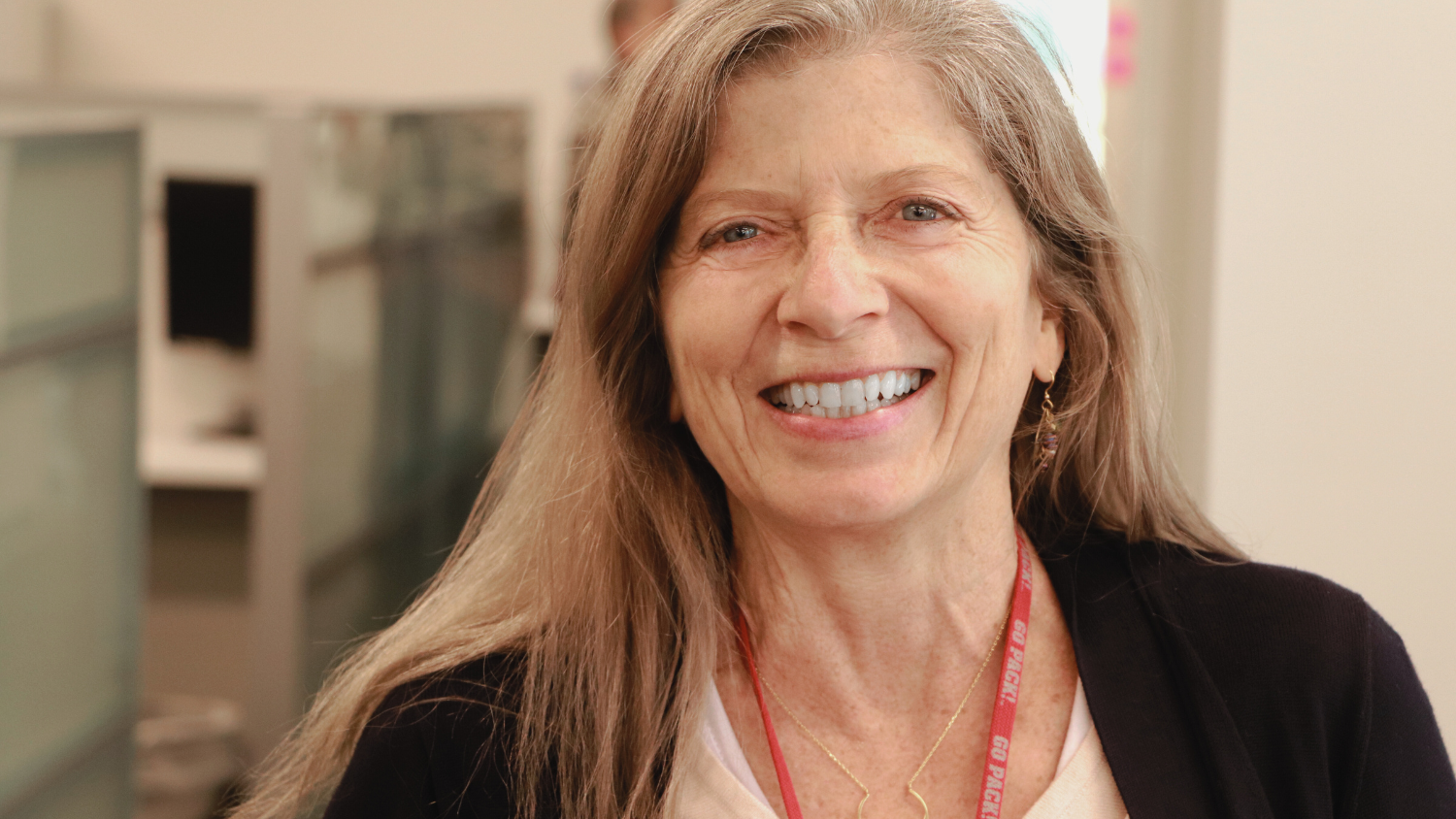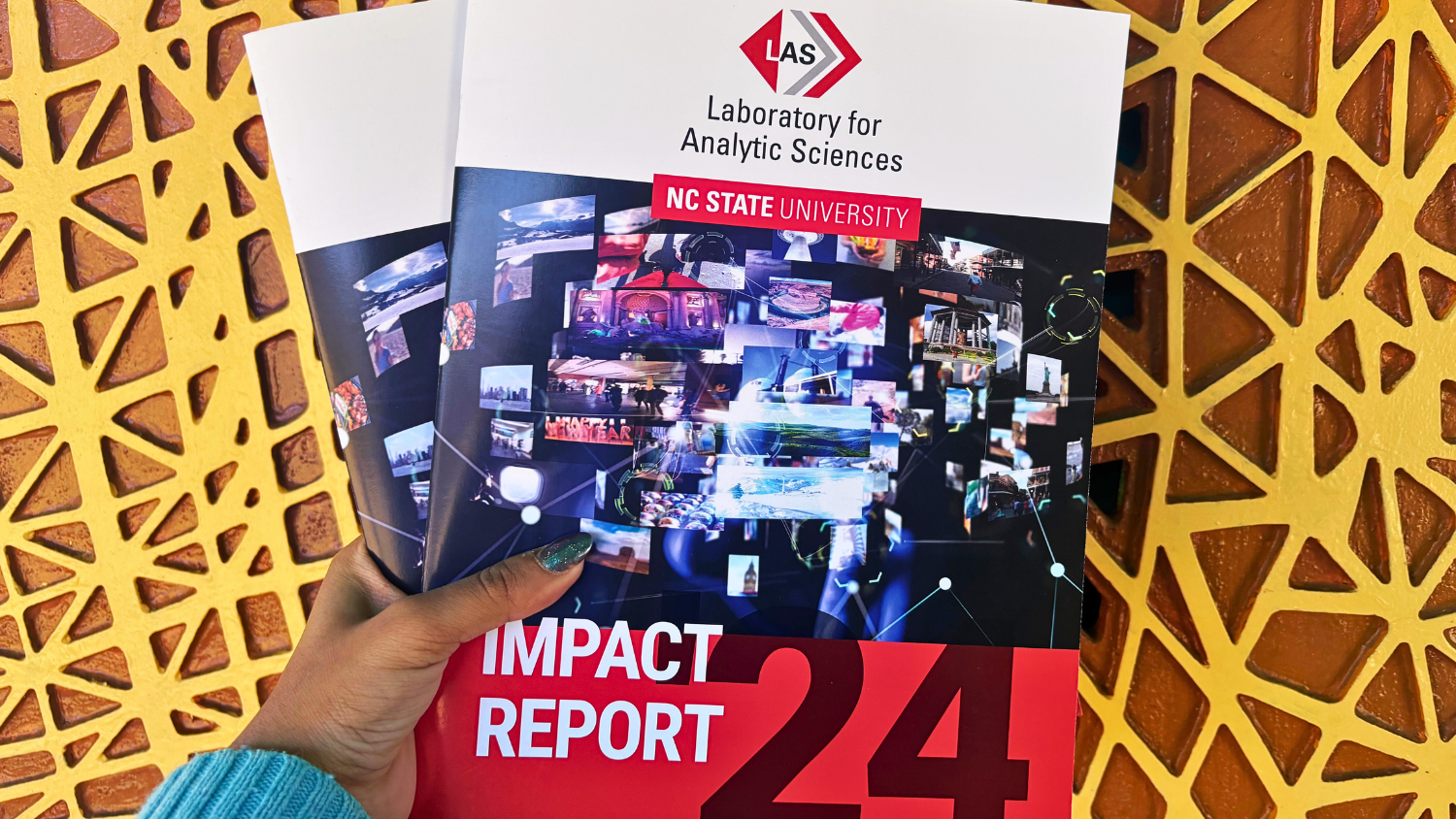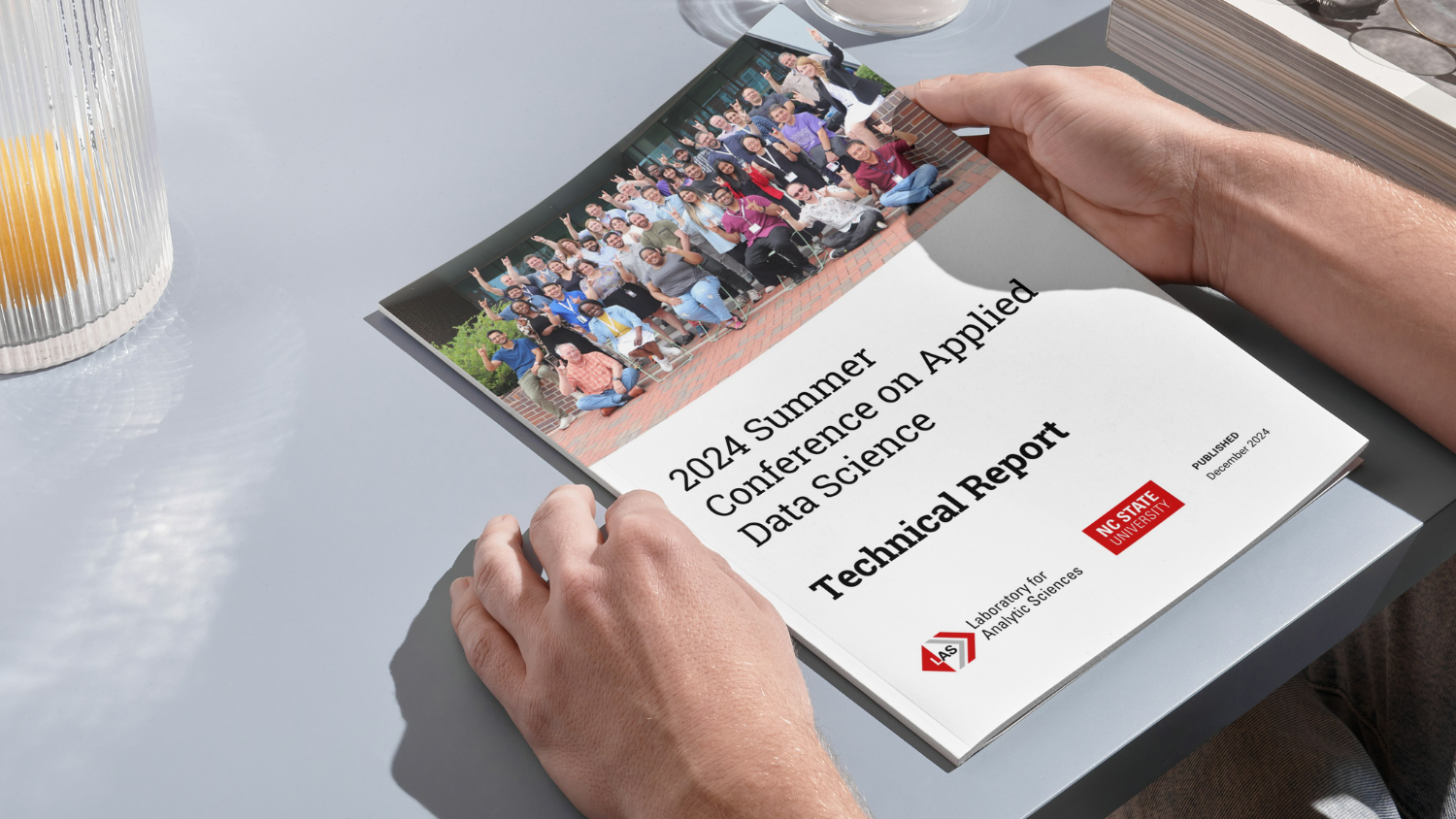Q&A with Amy Brown Gagnon, Director of LAS and Language Analyst

Amy Brown Gagnon has served as director of the Laboratory for Analytic Sciences for nearly 3 years. In her role, she works with government, academic and industry partners to research and implement solutions to the U.S. Intelligence Community’s strategic analysis challenges. She is a career employee of the National Security Agency (NSA), where she is a Defense Intelligence Senior Leader. She has degrees in business and French.
What led you to a career in this field?
I studied language while I was in college, and started out my career as a language analyst. I have a different background than you might traditionally find in a research lab. I spent the bulk of my career working as an analyst, especially following 9/11. I worked as an analyst and in roles that examined what we could do to improve the way analysts were able to accomplish their work. Even from the time when I was working as an analyst, it was apparent to me that there was room for improvement in the tooling environment and in taking advantage of technology. That was what kept me looking for opportunities, career-wise, that would put me in a place where I could try to move things forward. I’m grateful that leadership from [NSA] headquarters was open to a person with the kind of background that I have serving in a role like this. I think it was a unique opportunity for me.
What do you like about working at LAS?
We have analysts sitting literally next to people who have technical backgrounds in computer science, research, math, software development – all the kinds of people who can help analysts think through what some of these improvements actually look like. Through the years when I was at [NSA] headquarters, we were working with some of the people in technology to help us make advancements and improvements. We talked to them a lot, but we didn’t sit with them. That back and forth wasn’t as easy because we weren’t physically co-located. [At LAS,] we have people with all kinds of backgrounds who are physically co-located, whose job it is to find ways to work together and explore how we can capitalize on what’s happening in the unclassified world. That is not something I had been a part of when I was at headquarters, so I like that aspect of it too. I always knew there were a lot of exciting developments happening in academia and industry. Now I can dig in and look at how we can take advantage of it.
What is an example of an obstacle that you have faced as a woman in the intelligence community?
Early in my career, I was this little tiny person who looked a lot younger than I was. I felt like people looked at me as the little girl in the room. I just accepted it as my reality. I can’t ever expect that I’m going to walk into a room and not have to prove myself so I decided, that’s fine, I’m just gonna prove myself.
I have five kids. The biggest challenge for me was trying to figure out how to juggle the things that were absolutely number one importance to me, which were my kids and my family, and all of the things that I wanted to do to help them grow. But also, to not put my career so far on the backburner that it just died. My oldest is 13 years older than my youngest, so I had little kids for a long part of my career. In the early years, there wasn’t a lot of overt support for women in the workforce who were raising kids. You just had to figure it out. Now I think it’s awesome that we have so many more support structures in place to help families navigate all this.
What advice would you give to someone looking to enter the intelligence community or the research community?
First, if there’s something you want to try, even if you feel like you’re in a place where it’s hard to see how that could happen – like a government bureaucracy, for instance – there are ways to move your career in the direction that you want it to go. Don’t let yourself get boxed into anything that people might tell you about how things work.
Second, in a world where we focus a lot on individual achievement, the reality is nothing gets done by one person alone. Find ways to collaborate with people who have different backgrounds and experiences. When I was a student, everybody always hated those group projects, but life is about being successful through group projects. I look at other industries, like the world of arts and the world of sports, for examples where beauty comes out of true collaboration. I think that’s true in our industry as well. You don’t get beautiful music unless you collaborate.
Third, seek mentors who have similar backgrounds to what you want to do, but also find mentors who maybe have really different backgrounds. I’ve learned a lot throughout my career from people who have been willing to mentor me, and I also learn a lot from people who seek me out. Find mentors and be a mentor.
What are you currently reading?
I usually have a book of fiction, a book of nonfiction, and an audio book all going. My nonfiction book is Spies, Lies and Algorithms: The History and Future of American Intelligence by Amy Zegart. My fiction book is Things We Never Got Over by Lucy Score. And I’m listening to the 18th book in a murder mystery series by Louise Penny called A World of Curiosities.
What’s on your playlist?
I always have Sara Bareilles on my music playlist. She’s my role model for so many things musically. I’m into Americana music. The other thing on my playlist is a podcast in French because I’m getting ready to go to France. I studied in France as a student so I have pretty solid French, but it’s been a while.
What’s your favorite movie?
I’m gonna go with The Princess Bride.
- Categories:


